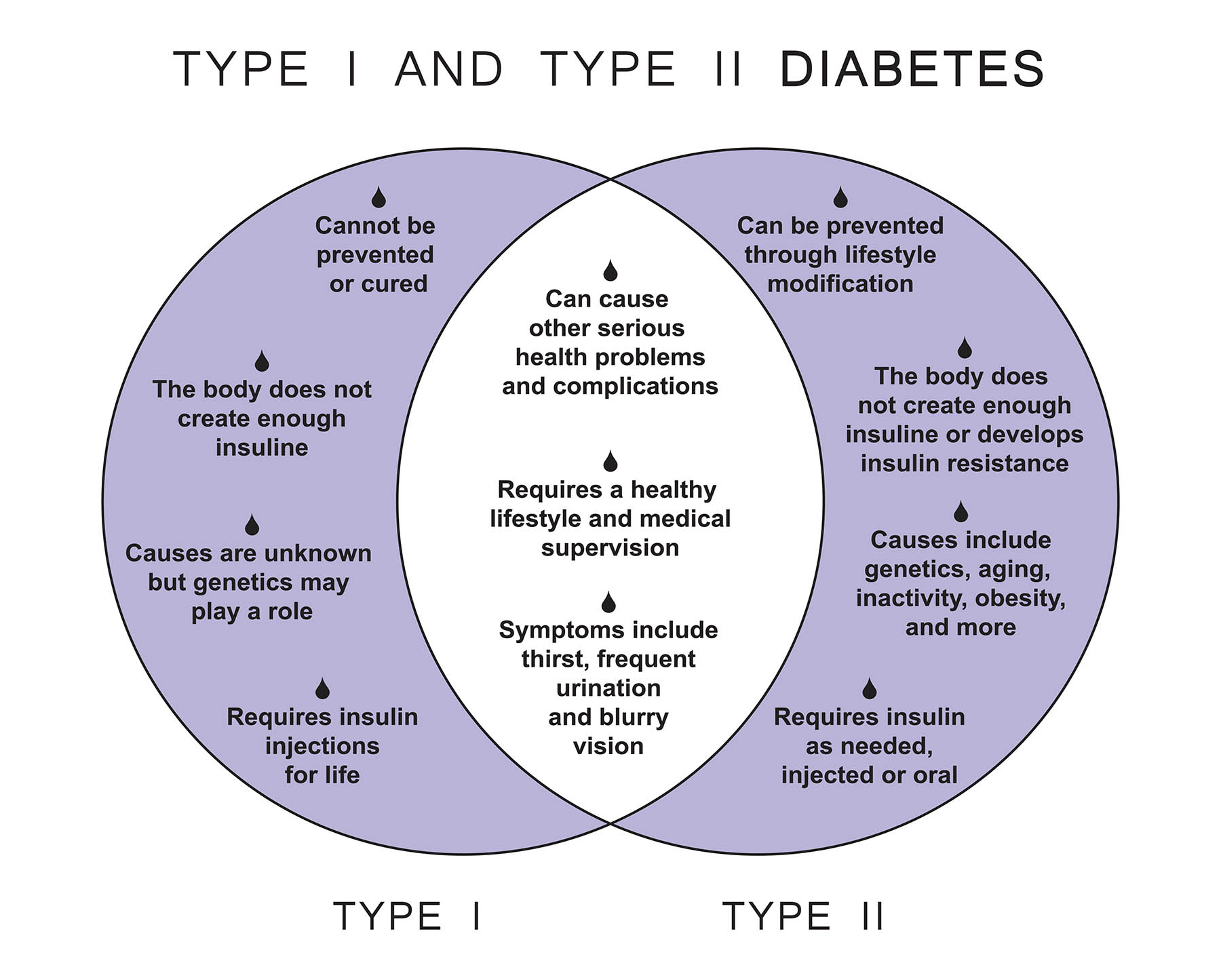Introduction to Type 1 and Type 2 Diabetes
Diabetes is a chronic condition that affects how the body processes blood sugar (glucose). While Type 1 and Type 2 Diabetes share similarities, they are distinct in their causes, onset, and management.
What is Type 1 Diabetes?
Type 1 Diabetes is an autoimmune condition where the body’s immune system attacks and destroys insulin-producing cells in the pancreas. It’s often diagnosed in children and young adults, and is less common than Type 2 Diabetes.
Key Characteristics of Type 1 Diabetes
- Sudden onset, usually in childhood or adolescence.
- Insulin dependency: Individuals must take insulin daily as their bodies don’t produce it.
- Not linked to lifestyle factors or weight.
- Regular blood sugar monitoring is essential.
Understanding Type 2 Diabetes
Type 2 Diabetes is a metabolic disorder where the body becomes resistant to insulin or doesn’t produce enough insulin. It’s more common and usually develops in adults, although cases in children and teens are increasing.
Key Characteristics of Type 2 Diabetes
- Gradual onset, often in adulthood.
- Can be managed with lifestyle changes, oral medications, and sometimes insulin.
- Strongly linked to lifestyle factors like obesity, physical inactivity, and diet.
- May be controlled through diet and exercise in early stages.
Genetic and Environmental Factors
Both types of diabetes have genetic components, but Type 2 Diabetes also has a stronger link to environmental and lifestyle factors. Family history can increase the risk for both types.
Differences in Symptoms
While both types share symptoms like excessive thirst, frequent urination, and fatigue, Type 1 Diabetes symptoms tend to develop more rapidly. Type 2 Diabetes symptoms can be more subtle and develop over years.
Treatment and Management
Treatment for Type 1 Diabetes focuses on insulin replacement through injections or a pump. Type 2 Diabetes management starts with lifestyle changes and oral medications, with insulin therapy as the disease progresses.
Importance of Monitoring and Healthcare
Regular monitoring of blood sugar levels is crucial for both types of diabetes. Management involves regular healthcare appointments, diet and exercise plans, and may include glucose monitoring devices and insulin therapy.
Navigating Diabetes with Knowledge
Understanding the differences between Type 1 and Type 2 Diabetes empowers individuals to manage their condition effectively. With proper care, education, and support, people with diabetes can lead healthy, active lives.






